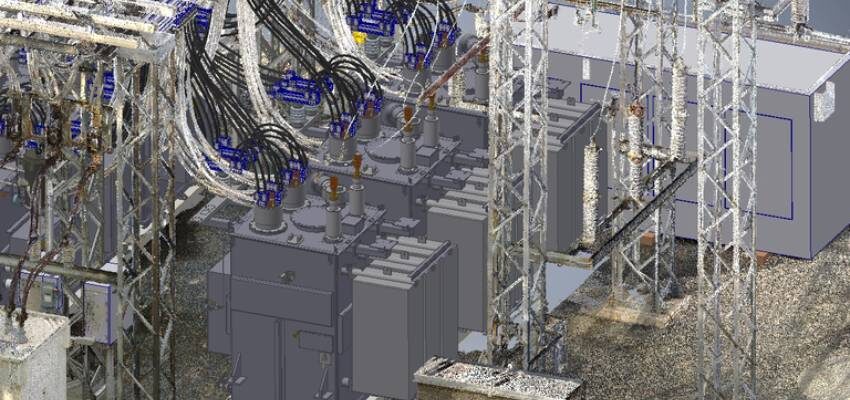Duke Energy Uses 3-D Scanning in a Substation
By using a 3-D scan of the substation, the developmental team can scope the station without having to make a site visit.

Image source: T&D World
USA, North Carolina, Charlotte: By using a 3-D scan of the substation, the developmental team can scope the station without having to make a site visit.
Historically, light detection and ranging was used by utility engineers to aid in the design of transmission lines. The use of this technology has since been expanded to other areas that needed the same level of detail and accuracy, including substations. Duke Energy’s first use of 3-D scanning in a substation showed how useful this technology can be. The utility had an industrial customer substation — with two parallel banks of single-phase transformers — that was very congested and heavily loaded.
During routine substation maintenance, Duke Energy identified transformer equipment that needed to be replaced to avoid a potential unplanned outage for a large industrial customer. Because the transformers at this station were operating near capacity, the utility decided to upgrade them to new, higher-capacity equipment. The challenge was the new transformers had a larger footprint, yet the substation was already very congested. It was critical to ensure adequate clearance from other equipment. With only hand-drawn plans of the substation, Duke Energy looked to 3-D laser scanning to design an accurate model of how the new transformers would fit in the substation.
Now, by using a 3-D scan of the station, the developmental team can scope the station without having to make a site visit, saving time and travel expense. The scan also gives the project team access to the data cloud any time to address questions and virtually revisit the site as often as needed.
Source: T&D World




